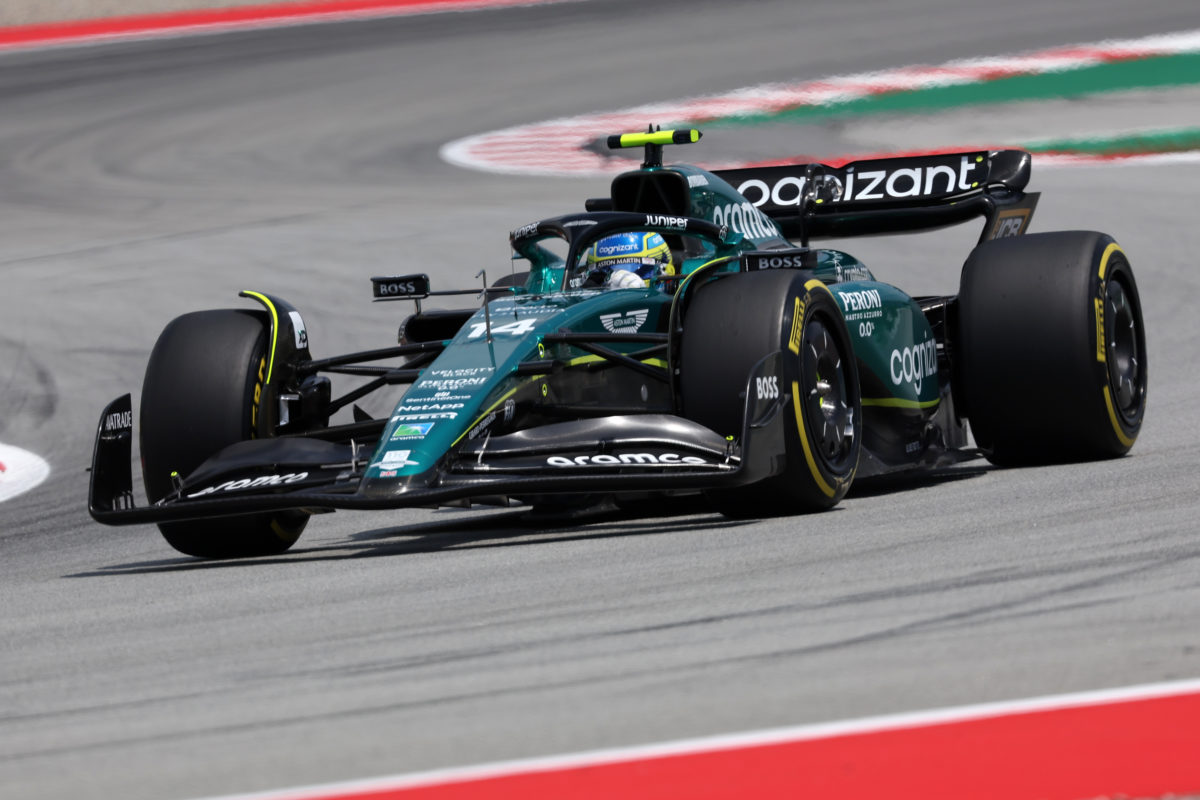

Home favourite Fernando Alonso at least posed a threat to Max Verstappen in second practice for the Spanish Grand Prix on another day of dominance from the seven-time F1 champion.
Verstappen was in a class of his own in FP1 around Barcelona’s Circuit de Catalunya, finishing three-quarters of a second ahead of Red Bull team-mate Sergio Perez.
By the end of the second hour-long session, Verstappen was unsurprisingly again quickest, posting a time of one minute 13.907s although Alonso was only 0.170s adrift in his Aston Martin by the conclusion of the soft-tyre runs to the delight of the fans in the grandstands.
Surprisingly, Haas driver Nico Hulkenberg was third fastest, a further tenth of a second behind Alonso, with Perez having to settle for fourth on the timesheet, 0.312s behind Verstappen.
Given the speed of the track now, following the removal of the chicane in the final sector, the top 17 were covered by less than a second.
Remarkably, despite Alonso’s pace in his AMR23, team-mate Lance Stroll has so far struggled, as he was 18th, 1.103s down, with only Williams duo Alex Albon and Logan Sargeant slower as they propped up the standings, with the American 1.508s adrift.
It was a session in which Ferrari’s Carlos Sainz set the initial benchmark time with a lap of 1:14.999s on the soft tyres, only to gallingly be usurped by Verstappen on a set of mediums by 0.031s.
As the session ramped up, Sainz returned to the top of the timesheet, posting a 1:14.274s but within moments was again toppled, this time by team-mate Charles Leclerc by 0.028s.
At that stage, approaching the halfway point of the hour-long outing, the drivers settled into their qualifying simulation runs.
Once Verstappen strapped the soft tyres onto his RB19, it was no surprise the reigning two-time F1 champion went quickest, becoming the first to dip below 74 seconds with his time of 1:13.907s that proved to be the best overall for the day.
A shock did follow as Hulkenberg pushed himself into the frame, in contrast to team-mate Kevin Magnussen who was only 15th quickest, just over half a second back on the German.
For a third of a lap, it appeared as if Lewis Hamilton would challenge in his Mercedes as he purpled the first sector but a scruffy final sector saw him finish 0.642s off the pace, and 11th overall.
Alonso then slotted into second behind Verstappen by 0.170s, aided by a purple final sector, showing Hamilton the way.
Behind Perez, Alpine’s Esteban Ocon managed to get himself ahead of Leclerc and Sainz to finish fifth fastest, dropping the Ferrari duo to sixth and seventh.
George Russell, who was baulked and forced into the gravel early on by McLaren’s Oscar Piastri, was eighth ahead of Alfa Romeo’s Valtteri Bottas and Pierre Gasly in his Alpine.
A surprising feature of both practice sessions was the return of porpoising, a phenomenon that dominated the first half of last season, in particular, as F1 reintroduced ground-effect cars.
The feeling was that the bouncing experienced by the drivers had now been eradicated courtesy of development, only for it to strike back at a reconfigured Barcelona track.
A chicane late in the lap has been removed, leading to a fast sweep through the final corner, and considerably faster lap times by close to six seconds compared to last year. Leclerc was quickest in FP2 12 months ago with a time of 1:19.670s.
However, a bump in the final turn proved to be the spark that led to the cars porpoising, or bottoming out, along the start-finish straight and again making for an uncomfortable ride.
Russell, in particular, complained of his W14 “bottoming out”.
As in first practice, drivers also ran the rule over Pirelli’s prototype tyres it plans to introduce from the British GP onwards.
The rapid development of the cars following the introduction of last year’s new aerodynamic regulations has been far quicker than anticipated by Pirelli.
The teams are already delivering downforce levels and an increase in lap times the Italian manufacturer was not anticipating until the end of the season.
To prevent potential major issues, such as those experienced in the 202o British GP when there were three major blowouts, Pirelli has developed a more robust rubber.





















Discussion about this post